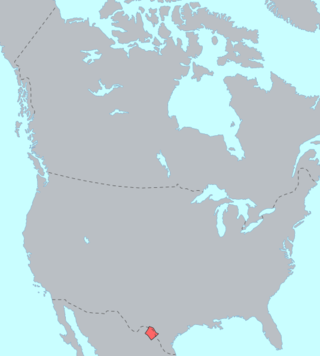Solano language
| Solano | |
|---|---|
| Olelato | |
| Native to | Northeast Mexico |
| Region | near Mission San Francisco Solano |
| Ethnicity | Solano people |
| Extinct | 18th century |
| Language codes | |
| ISO 639-3 | xso |
xso | |
| Glottolog | sanf1266 |
 Pre-contact distribution of Solano language | |
Solano is an unclassified extinct language formerly spoken in northeast Mexico and perhaps also in the neighboring U.S. state of Texas. It is a possible language isolate.[citation needed]
Background
[edit]Solano is known only from a 21-word vocabulary list that appears at the end of a 1703–1708 baptism book from the San Francisco Solano Mission,[1] which hosted at least four different peoples, including the Xarame, Payuguan, Papanac, and Siaguan.[2] Supposedly the language is of the Indians of this mission – perhaps the Terocodame band cluster. The Solano peoples are associated with the 18th-century missions near Eagle Pass, Texas.
Word list
[edit]The 21 known Solano words, as reproduced in Swanton (1940), are:[3]
Solano English aapag yes apam water genin, genint three hikomeya, hycomeya is she your sister? hipayō, hypayô to wish; Spanish: quiere (?) kainika, cainica tortilla krisen, crisen; krigen, crigen bad nabaog I am hungry naha mother namō eat it nikaog, nicaog meat no fur paam there is none papam father saath four sieh give me sihik, sihic tobacco sopaam sister soyā brother tciene, chiene salt taapam there are
Lexical comparison
[edit]Below is a comparison of selected words from Zamponi (2024). There are no obvious cognates with other neighboring languages.[2]
language father four meat mother three water Solano papam saath nikaog naha genin apam Lipan Apache[4] -ʔaaší dínínɁí -cinin -Ɂ-nándí káíɁí kó Coahuilteco[5] -xana·y puwa·nc̉an aha·wh -ta·y axtikpil wan Comecrudo[6] mawiʹs nawuiʹ eweʹ, kai maʹt, te ̉yiʹy aʹx̣ Tonkawa[7] ʔewas, ta·taʔ sikit ʔawas xʔay, ʔesaʔ metis ʔa·x Proto-Uto-Aztecan[8] *na, *ta(ta), *ʔok *mako’ *tuhku, *waʔi *ye, *nan *pahi *pa
See also
[edit]Bibliography
[edit]- Campbell, Lyle. (1997). American Indian languages: The historical linguistics of Native America. New York: Oxford University Press. ISBN 0-19-509427-1.
- Goddard, Ives (Ed.). (1996). Languages. Handbook of North American Indians (W. C. Sturtevant, General Ed.) (Vol. 17). Washington, D. C.: Smithsonian Institution. ISBN 0-16-048774-9.
- Sturtevant, William C. (Ed.). (1978–present). Handbook of North American Indians (Vol. 1–20). Washington, D. C.: Smithsonian Institution. (Vols. 1–3, 16, 18–20 not yet published).
References
[edit]- ^ Association, Texas State Historical (2019-02-12). "San Francisco Solano Mission". Texas State Historical Association. Retrieved 2024-01-30.
- ^ a b Zamponi, Raoul (2024). "Unclassified languages". The Languages and Linguistics of Indigenous North America. De Gruyter. pp. 1627–1648. doi:10.1515/9783110712742-061. ISBN 978-3-11-071274-2.
- ^ Swanton, John R. 1940. "Words from a dialect spoken near the mission of San Francisco Solano, below Eagle Pass on the Rio Grande". Linguistic material from the tribes of Southern Texas and Northeastern Mexico. (Bureau of American Ethnology Bulletin 127). Washington: Government Printing Office. pp. 54-55.
- ^ Hoijer, Harry. 1956. "The chronology of the Athapaskan languages". International Journal of American Linguistics 22. 219–232.
- ^ Troike, Rudolph C. 1996. "Sketch of Coahuilteco, a language isolate of Texas". In Ives Goddard (ed.), Handbook of North American Indians. Vol. 17: Languages, 644–665. Washington: Smithsonian Institution.
- ^ Swanton, John R. 1940. Linguistic material from the tribes of Southern Texas and Northeastern Mexico. (Bureau of American Ethnology Bulletin 127). Washington: Government Printing Office.
- ^ Hoijer, Harry; Thomas R. Wier (editor). 2018. Tonkawa texts: a new linguistic edition. Norman: University of Oklahoma Press.
- ^ Miller, Wick R. 1967. Uto-Aztecan cognate sets. (University of California Publications in Linguistics 48). Berkeley/Los Angeles: University of California.
